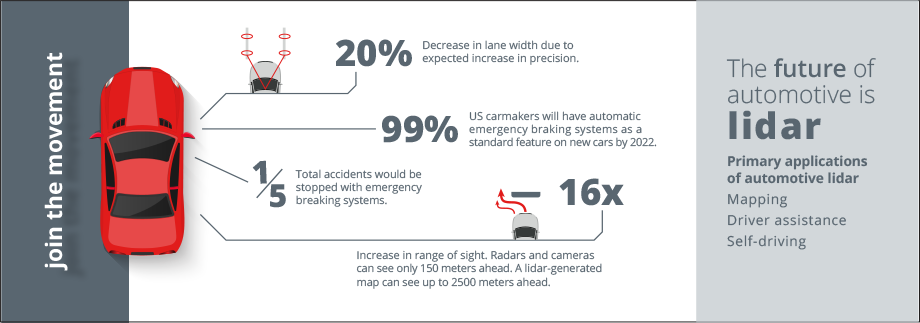Why lidar?
Radar and lidar are two technologies that appear in current driver-assistance hardware. Autonomous driver assistance systems increase a driver’s awareness of surrounding factors that present safety risks. Both work on the principle of measuring the “time-of-flight” of an electromagnetic wave from the moment it leaves the source to the moment the wave is detected by the sensor, after having reflected from any objects in the foreground.
Radar is fast becoming a commodity for autonomous automobile technology but will continue to be used for safer redundant systems. Radar systems use radio waves, requiring large sources and detectors. Radio waves are prone to electromagnetic interference from other radio sources and they also have low resolution.
In contrast to radar, lidar uses much shorter wavelengths, generally in the near infrared range of 800–1700 nm. Lidar systems have higher resolution than radar systems, and lidar systems can even create three-dimensional images of foreground images. This capability enables both object detection and recognition.
This following infographic offers some of the latest statistics on where the automotive market is headed and the projected impact lidar technology in autonomous driver assistance systems will have.

Want more on lidar source technology? Download our white paper, The Race to the Starting Line: Edge Emitting Diode Lasers vs. VCSELs for the Automotive Lidar Market.
Sources: Florida Trend, NPR, National Highway Traffic Safety Administration, ABI/Inform, Boston Consulting Group, Consumer Reports, SAE International


